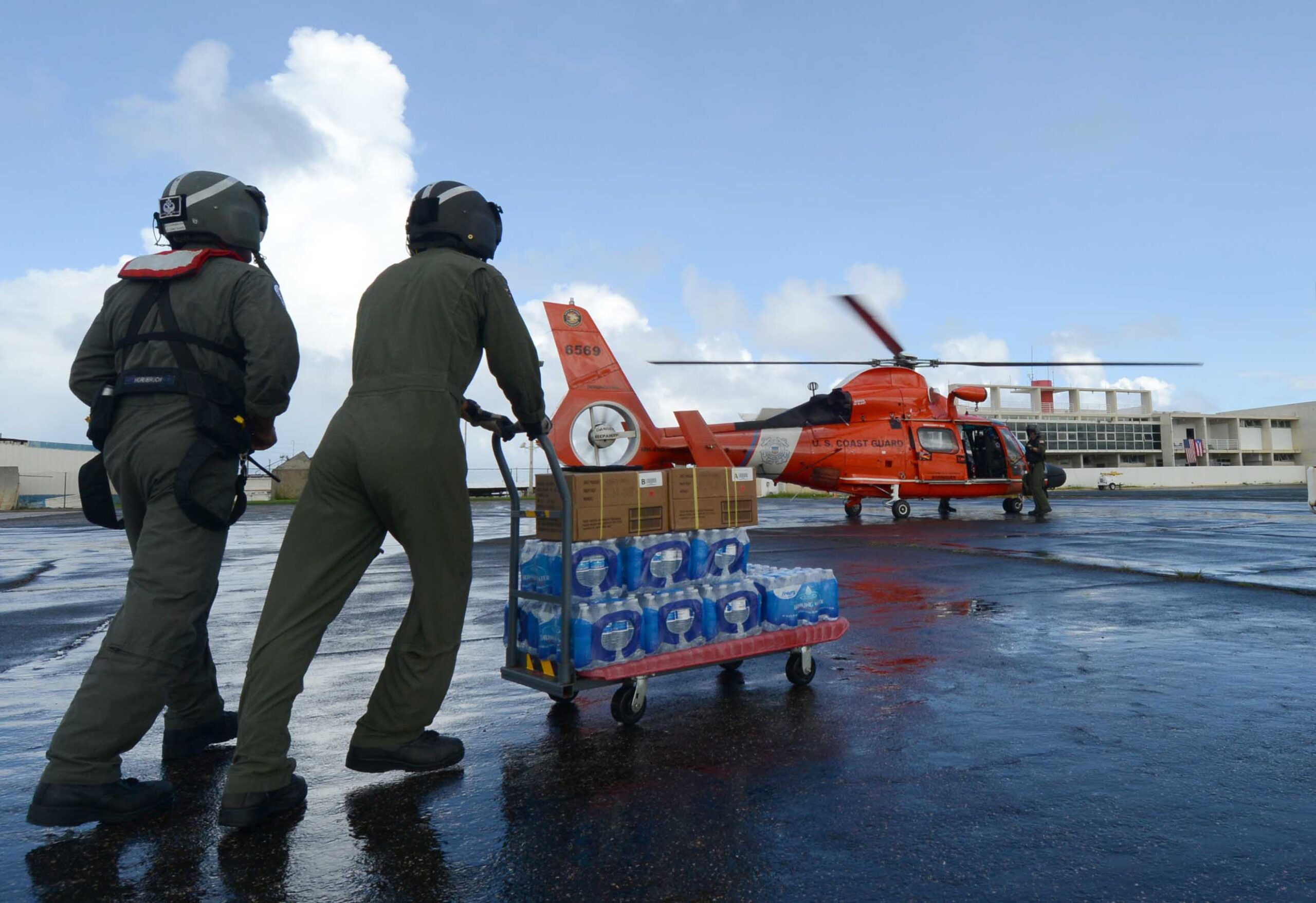The fall of 2017 was marked by wildfires that burned most of Napa, Sonoma, and Mendocino counties in Northern California, and a hurricane season with 17 tropical storms — 10 of which became hurricanes and six that reached a category three or stronger. Millions of people dealt with and continue to face loss of power, as well as shortages in water, medical care, and food, through the fall and winter.
While media coverage of these events often focuses on the initial impact, rarely do we get to see what happens behind the scenes as first responders prepare or during the civilian disaster relief and the long haul to recovery that follows. Among these helpers were UMBC faculty, staff, and students who joined the relief efforts as first responders, fundraisers, and aids in navigating the social, legal, and political complexities of disaster relief and recovery.
Helping the Most Vulnerable
As Hurricane Harvey wreaked havoc in Texas in late August, Brian Grodsky, assistant professor of political science and a health technician with the U.S. Department of Health and Human Services, enlisted as a volunteer with the federal MD-1 Disaster Medical Assistance Team. Days later, when Irma, a Category 4 hurricane, roared towards Florida, he began working in emergency rooms to triage less critical patients so the hospital could focus on higher-risk patients.
“Being able to directly help people in the most vulnerable situations helps satisfy a need for more tangible outcomes that sometimes is hard to come by from research, teaching, and speaking,” says Grodsky. “There is always a way to give and to connect your professional skills to the many needs a disaster presents.”
He hesitantly returned to civilian life two weeks later while part of his team headed to Puerto Rico, where Maria, a Category 5 hurricane, shut down the entire power grid. Meanwhile, on campus, several of UMBC’s Puerto Rican volleyball players waited to hear from their families and figure out how they could help from afar.
Hometown Heroes
Claudia Lopez ’18, biology and psychology, a native of Puerto Rico, used a crowdfunding platform to raise more than $10,000 from friends in the UMBC community and beyond, which was split between two major foundations that focus on aid for Puerto Rico. Lopez also collected donations of water, toiletries, and clothing, which she delivered in person at the end of the fall semester.
“I felt helpless being here, but in Puerto Rico we always help each other. I knew I could do something,” says Lopez. “The response on campus was amazing. There was a staff member that donated every day. Student athletes and coaches donated the most in the first three days. I hope people remember the need even after the media leaves.”
Emergency services students like Charniece Johnson ’18, and Ian Hamilton M.S. ’20, served as FEMA reserve workers for more than a month and a half at the beginning of fall semester
“It was very emotional. I helped people feel heard and understood, and explain what they could expect from FEMA,” recalls Hamilton, who helped connect affected residents with financial and other services in Florida. “There are a lot of people that after you finish listening and talking with them, they give you a hug. I feel like I am making a difference and getting paid for it, more than just financially, in hundreds of ways.”
Johnson worked with Disaster Survival Assistance, helping people from the Virgin Islands with critical health care needs get the care they need. “I want to do something for people. I don’t want to be behind a desk,” said Johnson, who said she enjoys working in the field.
Examining Inequity
Susan Sterett, director of the School of Public Policy and a native of Sonoma County, California, used her personal blog to explore the social and political inequities that limit disaster response efforts as she saw her own hometown burn. Sonoma was and is a vacation spot for the wealthy that is surrounded by homelessness, poverty, and working class people, many immigrants.
“We need to build in equity before disaster strikes since disaster often makes already existing inequalities worse,” says Sterett, who analyzed the social, environmental, and psychological impact of what it means to be in a natural disaster when there already exists so much inequality, and how relief efforts that are often driven by policy — but removed from the everyday reality — can deepen trust issues between the lawmakers and the people they aim to protect.
Sterett added: “As we have seen, inequality is a complex, multi-dimensional problem and one that becomes more evident during the long aftermath of natural disasters.”
— Catalina Sofia Dansberger-Duque
U.S. Coast Guard photo by Senior Chief Petty Officer Kyle Niemi
Tags: EHS, emergency, Spring 2018

